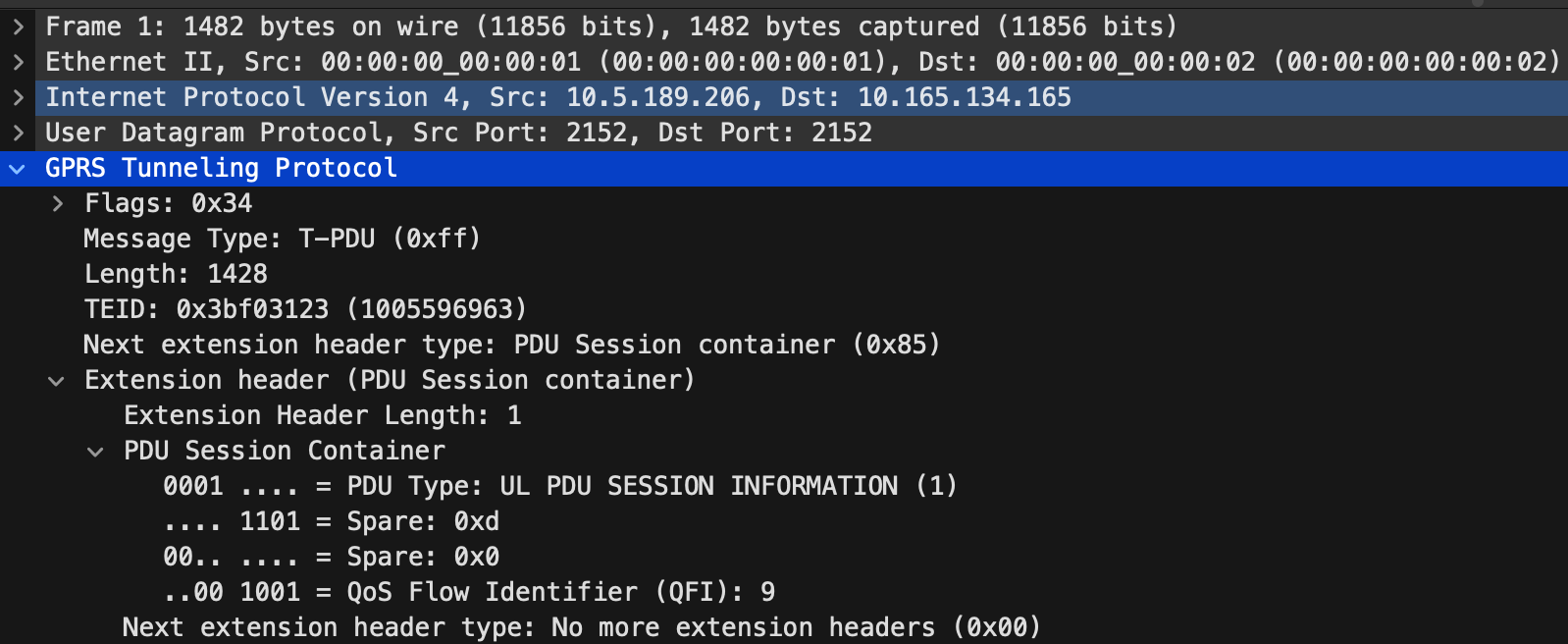Overview
GPRS Tunneling Protocol (GTP) is a vital protocol in mobile networks, enabling the encapsulation and transport of user and signaling data across network domains. Traditionally, GTP packets contain a standard header that carries essential control or user-plane information. However, modern network demands have led to the introduction of GTP Extension Headers, which provide additional metadata for advanced use cases.To address these evolving requirements in DC and Monitoring fabric networks, GTP with Extension Header Support parsing and filtering has been introduced in Aviz OPBNOS Product. This feature ensures seamless processing of GTP packets containing extension headers, allowing enhanced packet filtering and forwarding capabilities.

Supported GTP Extension Headers
GTP Extension: PDU Session Container for 5G
- Advanced Traffic Management: Optimizes routing and reduces congestion for efficient data flow.
- Enabling Network Slicing: Allocates bandwidth, latency, and reliability for industries like healthcare, IoT, and autonomous vehicles.
- QoS Prioritization: Ensures high-priority traffic (voice, video, low-latency apps) is managed with real-time adjustments.
GTP Extension: Advanced QoS Handling
- Fine-Grained QoS Control: Includes Packet Delay Budget (PDB), jitter control, and loss rate, ensuring precise handling for latency-sensitive applications like cloud gaming, AR/VR, and mission-critical IoT.
- Adaptive Traffic Steering: Works with 5G’s Policy Control Function (PCF) to adjust QoS dynamically, prioritizing emergency services and time-sensitive applications.
- Better Performance in Congested Networks: Prevents packet loss and delays under peak traffic conditions, ensuring efficient resource allocation without service degradation.
What Open Packet Broker Does?
Extension Header Filtering & Load Balancing
- This feature is supported only on NVIDIA Spectrum-2 and above platforms. Additionally, the GTP parser must be enabled via CLI to ensure proper handling of packets with extension headers.
- The existing GTP Parser is modified to support predominant extension headers of GTP protocol to enable the NVIDIA Spectrum ASIC to parse and filter based on the GTP header parameters.
Configuration


Benefits
- Seamless Compatibility: Ensures smooth handling of both standard and extended GTP packets.
- Advanced Packet Filtering: Supports filtering based on inner headers even when extension headers are present.
- Optimized Network Performance: Enables efficient traffic management for modern mobile networks.
- Future-Proof Networking: Allows integration of advanced GTP functionalities required for next-generation mobile technologies such as 5G and network slicing.
For more details on GTP deployment scenarios, refer to GTP Deployment Use Cases.
FAQs
1. What is GTP extension header monitoring and why is it essential for 5G networks?
GTP extension header monitoring enables deep visibility into PDU sessions and QoS control in 5G standalone architectures. It ensures that user-plane traffic is handled with the precision needed for latency-sensitive, bandwidth-intensive applications like AR/VR and IoT.
2. How does Aviz Open Packet Broker support filtering of GTP extension headers?
Aviz OPBNOS allows filtering based on Tunnel Endpoint Identifier (TEID), inner IP headers (source/destination), and Layer 4 ports, even when extension headers like PDU Session Container (0x85) are present—enabling granular traffic steering and QoS enforcement in real time.
3. Why is PDU Session Container (0x85) filtering important for 5G Quality of Service?
The 0x85 GTP extension header provides metadata critical for 5G network slicing and QoS enforcement. Filtering this helps operators ensure that prioritized services—like emergency calls or low-latency applications—are dynamically optimized and routed efficiently.
4. What platforms are required to enable GTP extension header filtering in OPBNOS?
This feature is supported on NVIDIA Spectrum-2 (and above) platforms. It requires enabling the GTP parser via CLI to correctly interpret and act on GTP packets with extension headers.
5. How does GTP extension header support future-proof mobile network observability?
By supporting advanced QoS handling and network slicing metadata in GTP packets, Aviz OPBNOS equips operators to manage current and future 5G use cases ensuring compatibility, low-latency performance, and real-time traffic adaptation for next-gen mobile services.





